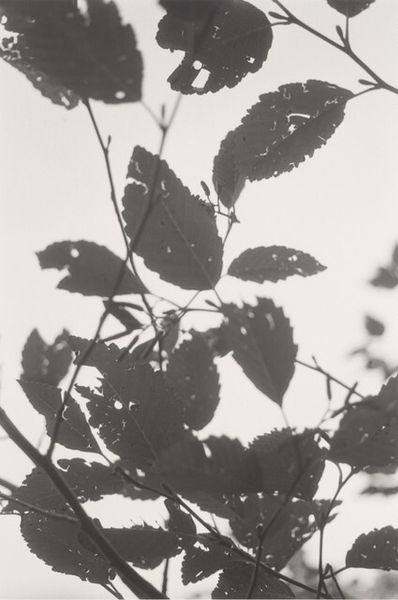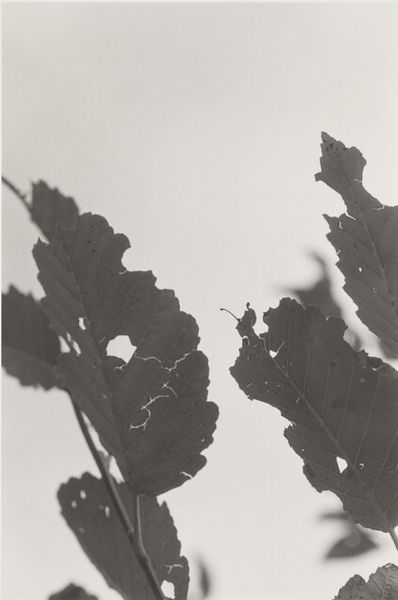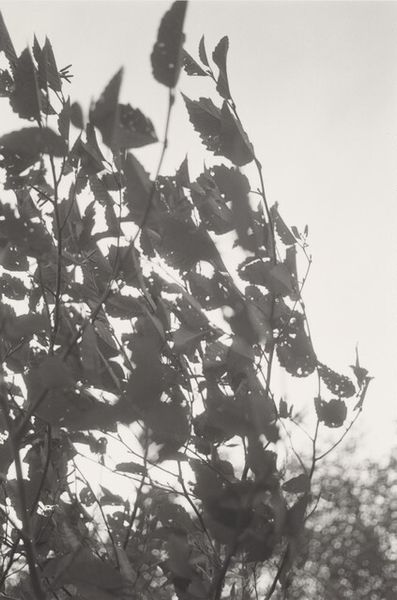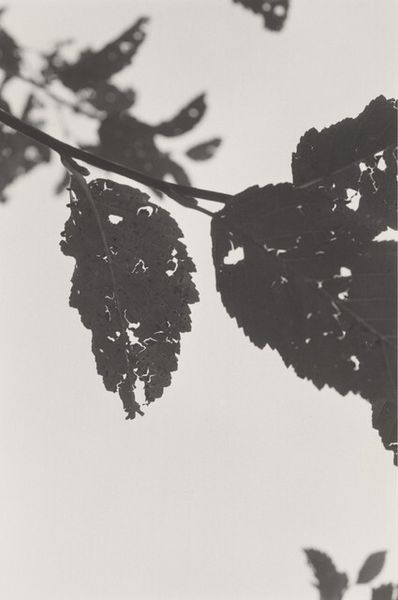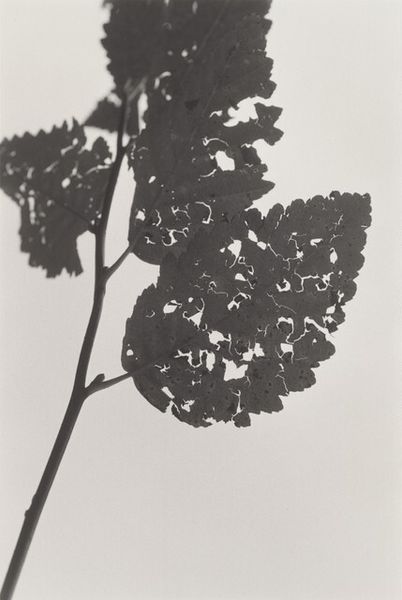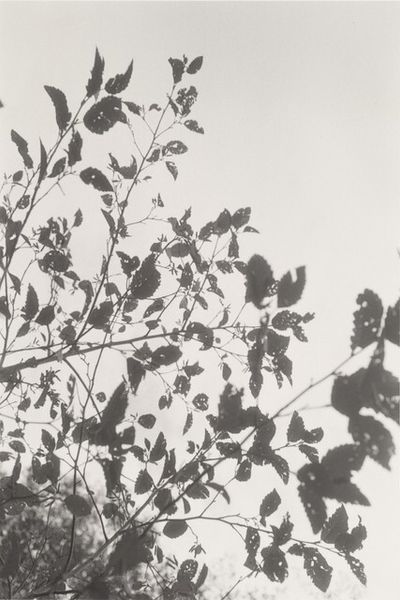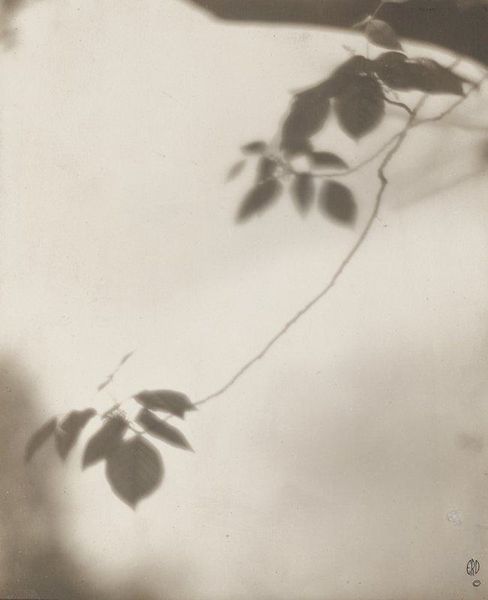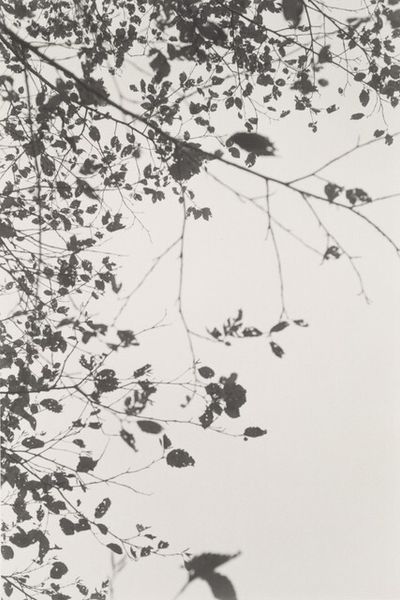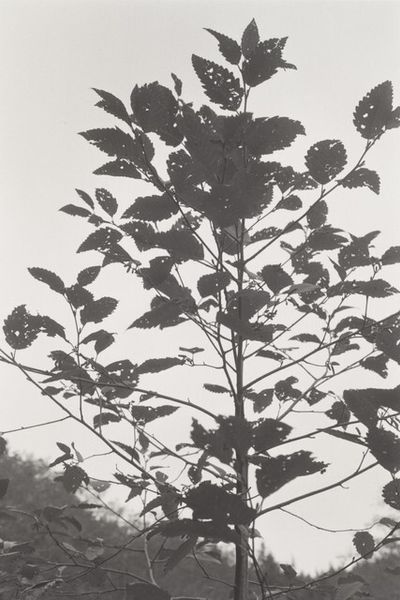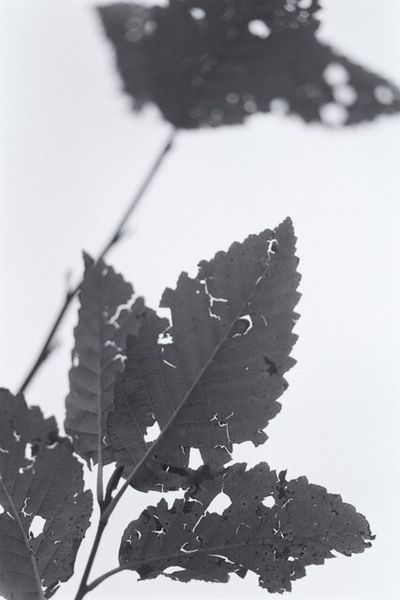
print, photography
#
still-life-photography
# print
#
landscape
#
photography
#
monochrome photography
#
monochrome
#
realism
#
flower photography
#
monochrome
Dimensions: image: 22.8 × 15.3 cm (9 × 6 in.) sheet: 35.4 × 27.8 cm (13 15/16 × 10 15/16 in.)
Copyright: National Gallery of Art: CC0 1.0
Editor: We're looking at Robert Adams's "Neahkahnie Mountain, Oregon" from 2004, a monochrome print photograph. There's a very simple composition—close-up of leaves against what seems to be a bright sky. I find its simplicity quite striking. How do you interpret this work? Curator: Adams often directs our attention to the tension between the natural world and the impact of human activity. This image, seemingly just leaves, asks us to consider Oregon's history, especially concerning resource extraction and environmental policies. Think about what is deliberately included and excluded: what isn't in the frame, such as the mountain, compared to what is. Does it suggest a critique? Editor: I see what you mean. Focusing on just the leaves makes the absent landscape all the more present in my mind. It's like he is showing what’s left behind. Curator: Exactly! And the fact that they are partially decaying adds to the feeling of precarity. Think of Adams's engagement with the New Topographics movement – its critical approach to land use, for instance. Does that lens give you more insight into this piece? Editor: It does! Now that you mention that connection, it makes sense why he chose such a close-up view, emphasizing vulnerability and a potential critique of ecological policies. The leaves feel symbolic now. Curator: These decaying leaves become a quiet protest against ecological devastation. Photography for Adams is more than just documenting the landscape; it’s about bearing witness and inciting conversation. Editor: So, it is a subtle reminder of our environmental responsibilities and the lasting effects of our actions? Curator: Precisely. It’s a poignant invitation to reflect upon our role in shaping – or misshaping – the environment, and a great example of how political intention may take unusual forms. Editor: That's powerful. I never thought I could get so much just from looking at some leaves!
Comments
No comments
Be the first to comment and join the conversation on the ultimate creative platform.

